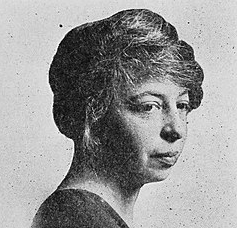There is a tree, by day,
That, at night,
Has a shadow,
A hand huge and black,
With fingers long and black.
All through the dark,
Against the white man’s house,
In the little wind,
The black hand plucks and plucks
At the bricks.
The bricks are the color of blood and very small.
Is it a black hand,
Or is it a shadow?
This poem is in the public domain. Published in Poem-a-Day on October 22, 2023, by the Academy of American Poets.
“Tenebris” appears in Countee Cullen’s Caroling Dusk: An Anthology of Verse by Negro Poets (Harper & Brothers, 1927). In Shadowed Dreams: Women’s Poetry of the Harlem Renaissance (Rutgers University Press, 2006), Maureen Honey, former professor of English and director of women’s studies at the University of Nebraska–Lincoln, writes, “Likening the branches of the poem’s tree to a hand ‘huge and black,’ whose shadow rests against ‘the white man’s house,’ [Angelina Weld] Grimké invites us to find in her image a statement about the relationship of Blacks to white society. One reading of the poem is that it sees Black struggle as a subterranean, persistent chipping away at white structures. The black hand ‘plucks and plucks’ at the bricks, which are ‘the color of blood and very small,’ at night when the occupant is sleeping, falsely secure that the image on his house is the shadow of a harmless tree. Yet the last line asks, ‘Is it a black hand, or is it a shadow?’ and we are left sensing that the white man’s house is in danger. The portrait of a house built with blood-colored bricks evokes memories of the big house on a plantation maintained by the blood and sweat of slave labor. It is also haunted by the ghosts of people whose anguish and anger are growing shadows on the white man’s power, gathering force while he basks in his privilege.”

